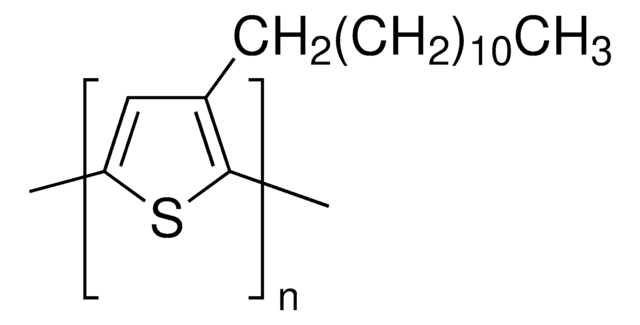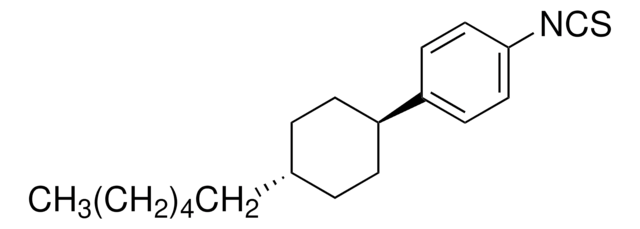Wszystkie zdjęcia(1)
Key Documents
922994
TpOx-2-An
Synonim(y):
8-(Anthracen-2-yl)-2,3,6,11,12-pentakis(pentyloxy)triphenyleno[1,2-d]oxazole
Zaloguj sięWyświetlanie cen organizacyjnych i kontraktowych
About This Item
Polecane produkty
temp. przechowywania
−20°C
Poziom jakości
ciąg SMILES
CCCCCOC1=CC(C(C=C(OCCCCC)C(OCCCCC)=C2)=C2C3=C4C=C(OCCCCC)C5=C3N=C(C6=CC=C(C=C(C=CC=C7)C7=C8)C8=C6)O
Powiązane kategorie
Opis ogólny
TpOx-2-An is a UV excitable fluorescent material with a polycyclic aromatic donor-acceptor structure where the triphenoxazole core acts as a donor and the aromatic group on the two position of the oxazole (2-anthracene) act as the acceptor group. The push-pull, donor-acceptor, structure facilitates intramolecular charge transfer in the excited state that results in a 264 nm emission Stokes Shift. This oxazole is also a photo-conducting Discotic Liquid Crystalline (DLC) material with mesophase transition onset temperature of 162 °C. It is designed for 355 nm and 405 nm excitation with emission at 536 nm with quantum yield of 0.51, high thermal, chemical and photostability. This luminescent compound has potential uses in fluorescent dye staining, organic electronic and photonics, and imaging applications.
Zastosowanie
Fluorescent materials have a range of unique properties that allows for potential use in a range of applications:
- Fluorescent dye staining
- Organic semiconductor for organic electronic and photonic applications
- Multi-photon microscopy
Przechowywanie i stabilność
Store under nitrogen in the dark in the freezer (below 8 Celsius).
This page may contain text that has been machine translated.
Kod klasy składowania
11 - Combustible Solids
Klasa zagrożenia wodnego (WGK)
WGK 3
Wybierz jedną z najnowszych wersji:
Certyfikaty analizy (CoA)
Lot/Batch Number
Przepraszamy, ale COA dla tego produktu nie jest aktualnie dostępny online.
Proszę o kontakt, jeśli potrzebna jest pomoc Obsługa Klienta
Masz już ten produkt?
Dokumenty związane z niedawno zakupionymi produktami zostały zamieszczone w Bibliotece dokumentów.
Nasz zespół naukowców ma doświadczenie we wszystkich obszarach badań, w tym w naukach przyrodniczych, materiałoznawstwie, syntezie chemicznej, chromatografii, analityce i wielu innych dziedzinach.
Skontaktuj się z zespołem ds. pomocy technicznej





![2,4-Bis[4-(N,N-diphenylamino)-2,6-dihydroxyphenyl]squaraine 98%](/deepweb/assets/sigmaaldrich/product/structures/303/054/d8b9c845-3623-4f5a-8a30-ab6731034171/640/d8b9c845-3623-4f5a-8a30-ab6731034171.png)


![6-[4-(4-Cyanophenyl)phenoxy]hexyl methacrylate 96%](/deepweb/assets/sigmaaldrich/product/structures/225/164/3dc33b5e-baf4-44f2-9e81-770c92250f7b/640/3dc33b5e-baf4-44f2-9e81-770c92250f7b.png)